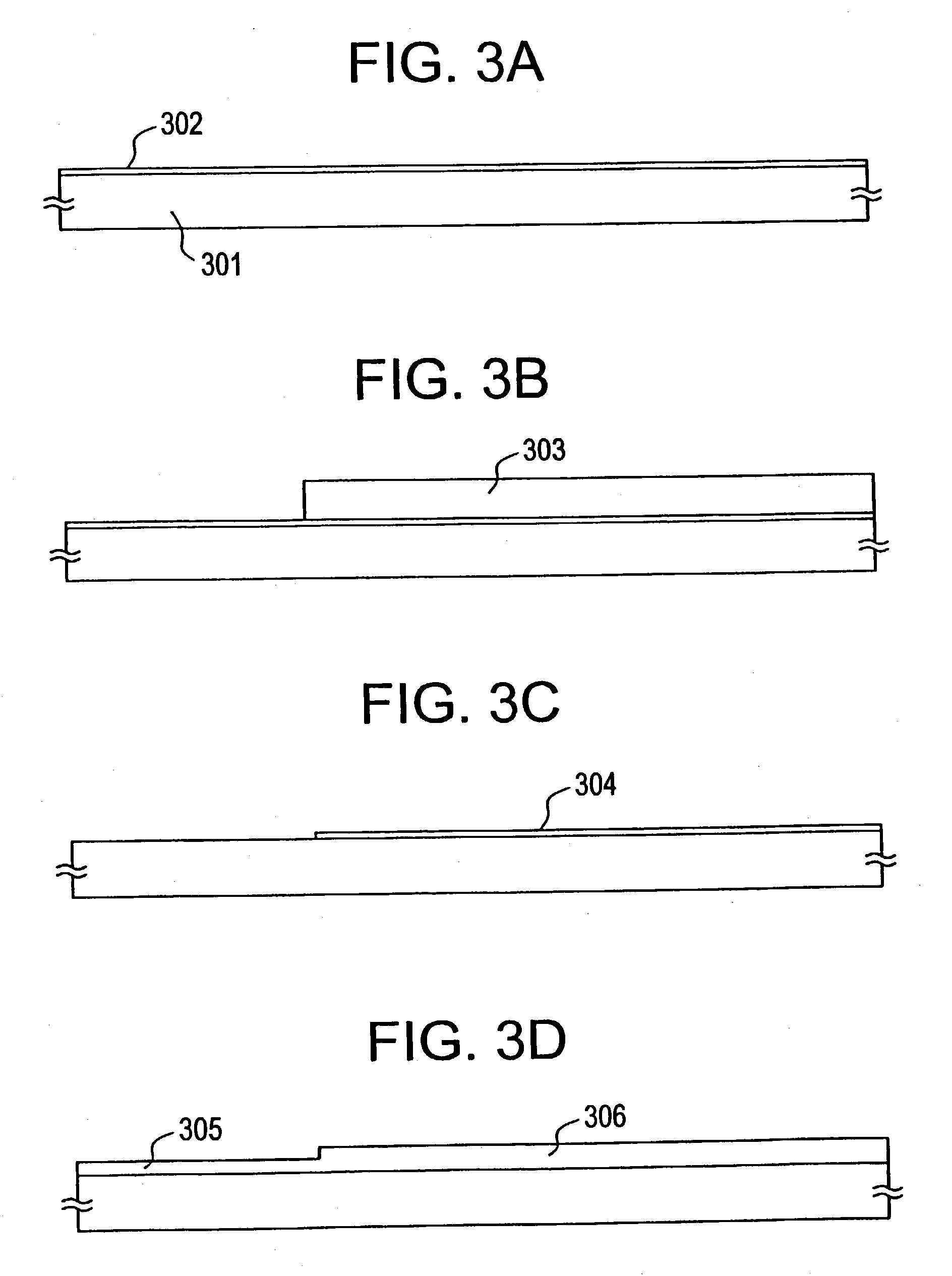Nonvolatile memory and manufacturing method thereof
a technology of nonvolatile memory and manufacturing method, which is applied in the direction of instruments, semiconductor devices, electrical apparatus, etc., can solve the problems of increase in manufacturing steps, and difficulty in miniaturization and slow write and read speed, so as to achieve the effect of easy impact ionization
- Summary
- Abstract
- Description
- Claims
- Application Information
AI Technical Summary
Benefits of technology
Problems solved by technology
Method used
Image
Examples
embodiment 1
[0042] This embodiment is directed to a nonvolatile memory formed on an insulative substrate, particularly an EEPROM. An EEPROM according to this embodiment is formed on an insulative substrate so as to be integral with its peripheral circuits such as a driver circuit.
[0043] FIG. 1 is a circuit diagram of a 4-kilobit EEPROM according to this embodiment. As shown in FIG. 1, the 4-kilobit EEPROM according to this embodiment is composed of a plurality of electrically erasable memory elements Tr1, a plurality of switching elements Tr2, X and Y address decoders 101 and 102, and other peripheral circuits 103 and 104. The peripheral circuits 103 and 104 include an address buffer circuit and a control logic circuit and are provided when necessary. Each memory element (storage element) Tr1, which stores bit information in FIG. 1, is a p-channel nonvolatile memory element having a floating gate. Each switching element Tr2 is an n-channel switching element.
[0044] The drain electrodes of two TF...
embodiment 2
[0127] Embodiment 2
[0128] According to this embodiment, first, an inexpensive, low-grade quartz substrate is prepared. Then, the quartz substrate is polished into an ideal state (average height difference of asperities: within 5 nm, typically within 3 nm, preferably within 2 nm) by CMP (chemical mechanical polishing) or the like.
[0129] In this manner, by subjecting it to polishing, even an inexpensive quartz substrate can be used as an insulative substrate that is superior in flatness. Since a quartz substrate provides a very dense underlying member, the interface between the underlying member and a semiconductor thin film is made highly stable. With an additional advantage that there is almost no contaminative influence from the substrate, this embodiment is very useful.
embodiment 3
[0130] Embodiment 3
[0131] In the first embodiment, a halogen element is used in the step of gettering the catalyst element for accelerating crystallization of silicon. In the invention, the element of phosphorus can also be used in the catalyst element gettering step (this embodiment). The other steps are the same as in the first embodiment.
[0132] Where the element of phosphorus is used, phosphorus may be added to regions other than regions to become active layers and a beat treatment may be performed at 400.degree.-1,050.degree. C. (preferably 600.degree.-750.degree. C.) for 1 minute to 20 hours (typically 30 minutes to 3 hours). As a result of the heat treatment, the catalyst element is gettered in the regions where phosphorus is added, whereby the concentration of the catalyst element in the regions to become active layers is reduced to 5.times.10.sup.17 atoms / cm.sup.3 or less.
[0133] After the completion of the gettering step, active layers are formed by using the regions other t...
PUM
 Login to View More
Login to View More Abstract
Description
Claims
Application Information
 Login to View More
Login to View More - R&D
- Intellectual Property
- Life Sciences
- Materials
- Tech Scout
- Unparalleled Data Quality
- Higher Quality Content
- 60% Fewer Hallucinations
Browse by: Latest US Patents, China's latest patents, Technical Efficacy Thesaurus, Application Domain, Technology Topic, Popular Technical Reports.
© 2025 PatSnap. All rights reserved.Legal|Privacy policy|Modern Slavery Act Transparency Statement|Sitemap|About US| Contact US: help@patsnap.com



